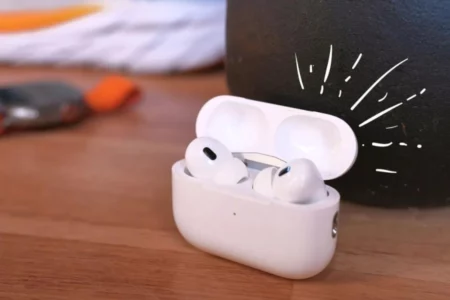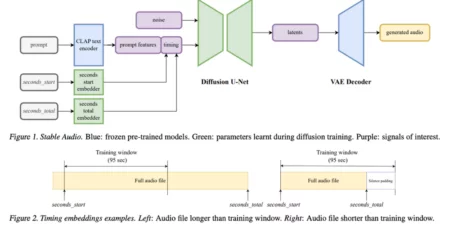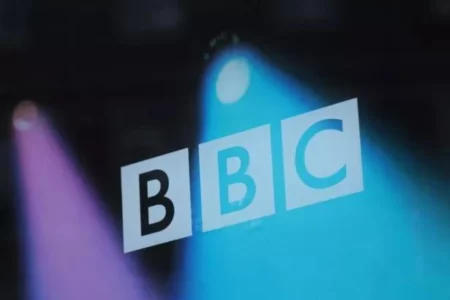Are you new to setting up a sound system and find it tricky? While navigating a speaker to an amplifier, you might get confused easily using different connectors or cable wires. Before doing anything, you must have information on how to connect speakers to amplifiers. If you do it wrong, it can damage the amplifier, speaker, or maybe both systems.
Before connecting them, read this article carefully to know the settings for the connections, so you do not have to face any future mishaps. It will surely help your speaker and amplifier work effectively and efficiently.
Things to Know Before Connecting a Speaker to An Amplifier
Connecting a speaker to an amplifier can be challenging when you don’t know where to start.
First of all, you have to know which amplifier will be suitable for your speakers. You must know the impedance and wattage of the speaker to select a perfect amplifier for your speaker.
You must first know if you purchase a new speaker and cannot understand which amplifier will suit your speaker. You can search for an amplifier speaker connection diagram on the internet to see the process in pictures.
You should check the following before connecting the speakers to the amplifier:
1) Checking the Power Capability of A Speaker
While connecting an amplifier with a speaker, it is necessary to know your speaker’s power capability. You can see the speaker’s power on the label attached to the structure. It must be in watts, like 800W, 1000W, 350RMS, etc.
The speaker’s total wattage power can dissipate the heat by the speaker’s coil. You must be careful because some manufacturers make speakers with a peak power that the speaker can hold only for a few seconds or minutes. They did this to mislead the buyers and to sell their products.
2) Match Amplifier’s Output and Speaker’s Input Power
A common mistake everyone makes while matching an amplifier’s output and a speaker’s input is to assume that the wattage power of the speaker must be greater than an amplifier’s wattage; that is not true.
If you have an audio amplifier, ensure it works correctly with enough headroom. It has to work at 80% of its maximum power capabilities. When an amplifier starts working beyond its maximum power, it can clip. Being clipped can damage the fundamental components of the speaker, especially the coil.
A good choice of an amplifier means selecting an amplifier with the same amount of power as RMS so that the speaker can hold it better and work smoothly. It would be better to choose an amplifier with twice the RMS to avoid clipping territory.
3) Selecting A Wire

An essential tool for connecting speakers and amplifiers is a wire. Most brands have socket wires, socket inserts into the speaker, and the other end of the wire connects to an amplifier.
Most of the wires in a market will be color-coated to avoid confusion, but the part you will connect to the speaker is a bit tricky. Speaker wires are positive and negative. There is a mark on a wire to indicate the positive wire; sometimes, it is in printed labels or dashed lines that indicate that you have to use it as a positive wire.
Strip the wire to expose its strands before connecting it to the speaker. Then, bind the strands tightly to look and act like a single wire. You can use many wires to connect an amplifier to a speaker cable. Banana plugs are mainly used for binding the post terminals, and pin connectors are suitable for spring clip terminals. You can easily install them to set up your speaker with an amplifier.
How To Connect Speakers To Amp and Mixer?
The process of connecting speakers with the amplifier completes in two steps.

1) Connecting Speaker to Amplifier
First, I’ll describe the complete procedure to connect a speaker to your amplifier. There are many ways to connect speakers to an amp, but I’ll describe the simplest one. Follow the procedure carefully:
- Make sure to turn off the amplifier before connecting it to a speaker to avoid pops, loud clicks, or thumps. It can cause severe problems to your speaker and an amplifier.
- Get the wires that are suitable for your connection.
- To protect the amplifier and speaker, match the speaker impedance in an amplifier.
- Focus on the equipment user manual and connect the wire appropriately with a speaker.
- While using many connectors, make sure that you connect the correct wires with the speaker and amplifier.
- Make sure to connect the appropriate terminal with its suitable terminal; if you connect them wrong, you might face challenging issues later.
- In the end, turn ON the amplifier and slowly increase the gain.
2) Connecting Speaker With Mixer
To connect the speaker to the mixer, here is the procedure to follow:

- First of all, you have to know your mixer’s connection. It will prevent any noise or interference. There are two types of connections; balanced and unbalanced connections. Make sure that your mixer has connection lines.
- Make sure to place your speaker in front of the microphone to avoid interference.
- Do not let the mixer and speaker touch each other, so place a mixer behind the speaker.
- You have to make sure that all the buttons and master volume are off of the mixer and speaker. If they are not, then turn them down. Make sure that all the buttons are working.
- You can use the speaker cable to connect the speaker to other devices. Keep the cable short to avoid any interference while connecting.
- Before connecting them, ensure the speaker and mixer must be turned off.
- Connect a speaker with the mixer using a cable wire, and turn it ON.
- Now, you can connect the source equipment with a mixer to use it.
How To Connect Speakers to A Receiver?
If you want to connect your speaker with a receiver, then make sure to find an appropriate place in your house then you can connect them both. It isn’t easy to do, but you can easily do this by following a few steps:
- Choose the appropriate wire to connect a speaker to a receiver; selecting a suitable wire for connection is lengthy.
- You can use HDMI, coaxial cables, or RCA; these wires are the most used nowadays.
- It is essential to turn off all the equipment that you are using.
- After a suitable cable wire, use it to connect to a speaker. Input the two-pronged plug into the back of a speaker.
- You will see colors on both ends of the wire, determining which end will connect to which terminal.
- Now, connect the two-pronged plug to the back of the receiver.
- Every speaker has colored terminals that help a person to connect the ends of the wire with the indicated terminal.
- After plugging the wire into a speaker and amplifier, turn them ON.
How To Wire Speakers to Amp in Car?
There are many ways to connect a speaker to an amplifier of a car. You can do this connecting procedure in the comfort of your home. You will need only a few things, like terminal connectors, speaker wires, and a soldering iron. Here is the easiest procedure to connect your car amplifier with a speaker.
- Firstly, you must select a large area where you will set an amplifier.
- After placing the amplifier in a car, you will need a long wire and 3 leads to connect it to a speaker.
- Connect the RCA cable wire to the back of an amplifier, and connect the other end to a speaker.
- Get a speaker wire and cut it into 4 sections at least.
- Remove almost 1cm coating from one end of the speaker wire to attach it with other wires.
- Now get solder metal terminals and attach them to the ends of these speaker wires.
- Connect all the wires to the left and right inputs of the amplifier. You will see multiple input terminals on an amplifier; use them to connect a speaker to an amplifier.
- Now, connect the other ends of the wires to a speaker and ensure that the wires are connected correctly.
While connecting a speaker with an amplifier, you have to connect using the 3.5mm jack. Find the port at the back side of the speakers and connect one end to it. Connect the other end to the amplifier to complete the connection. Remember to follow the instructions carefully to avoid any connection issues.
While connecting a speaker with an amplifier, you have to connect using the 3.5mm jack. Find the port at the back side of the speakers and connect one end to it. Connect the other end to the amplifier to complete the connection. Remember to follow the instructions carefully to avoid any connection issues.
Yes, you can connect more than one amplifier to a speaker easily. Connect the positive terminals of amplifiers to the positive terminal of a speaker and the negative terminals of amplifiers to the negative terminals of a speaker. All the amplifiers will connect to a speaker in the form of a chain.





